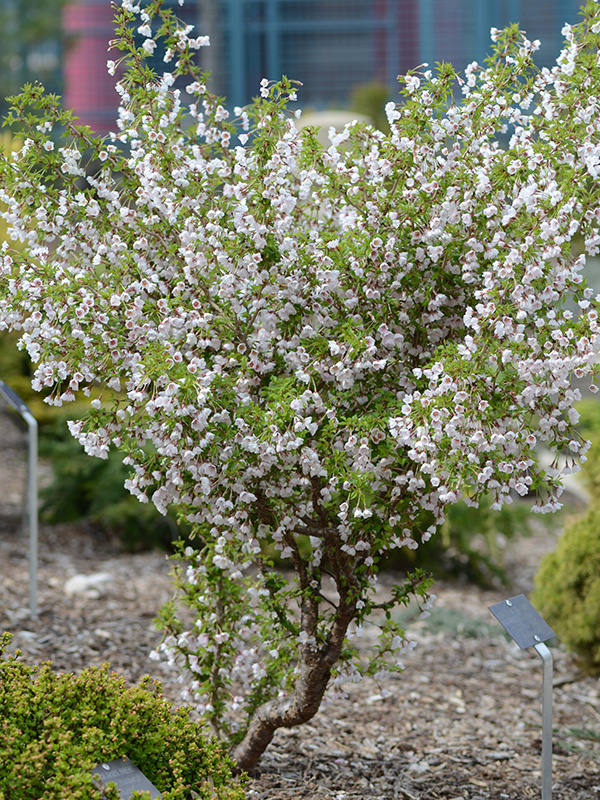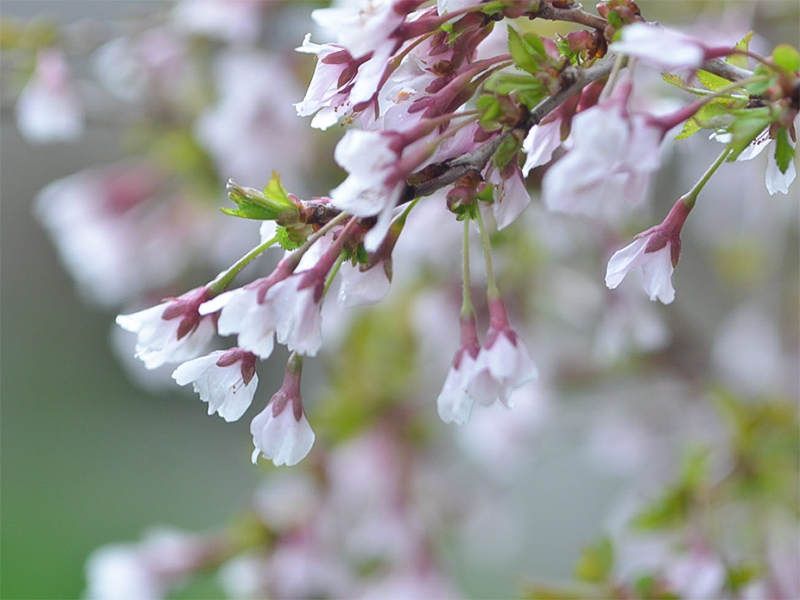
Woody > Prunus > Prunus incisa > Prunus incisa
Prunus incisa
Fuji Cherry
Origin: Found on the upper slopes of Mounts Fujii and Hakone, Japan. First seen by the Swedish naturalist in 1776 and introduced into cultivation in England by the Arnold Arboretum to the Royal Botanic Gardens, Kew in 1916.
Mike's
Opinion


"
This a little gem of a plant that is often overlooked and as a result not widely available with the exception of the cultivar 'Kojo-no-mai'. Worth the effort in sourcing and including in the garden as a detail plant for the true connoisseur.
Michael Pascoe, NDP., ODH., CLT., MSc. (Plant Conservation)
"
| Family |
| Rosaceae |
| Genus |
| Prunus |
| Species |
| incisa |
| Category |
| Woody |
| Type |
| Shrub (deciduous) |
| Pronunciation |
| USDA Hardiness Zone |
| 5 - 7 |
| Canadian Hardiness Zone |
| 3a - 6b |
| RHS Hardiness Zone |
| H6 - H7 |
| Temperature (°C) |
| (-29) - (-15) |
| Temperature (°F) |
| (-20) - 5 |
| Height |
| 3-5 m |
| Spread |
| 75 cm |
Photographs
Description and Growing Information
Flowering Period
| Landscape |
| One of the earliest ornamental flowering cherries and suited to mixed borders, rock garden or lawn or specimen plants. It may also be trained as a standard and used in more formal situations. There are many cultivars available. |
| Cultivation |
| Easy to grow as long as suitable drainage is provided in most soils types in a sunny disposition. Pruning is not generally required however, size and form may be controlled by taking branch tips back to a side shoot. |
| Shape |
| Forms a dense, umbrella shaped crown. |
| Growth |
| Medium |
| Pests |
| Plum Pox: Symptoms may be confused with other diseases/disorders such as nutrient deficiencies or pesticide injuries. PPV symptoms can occur on leaves, flowers and/or fruit. Faint yellow rings or lines may be found on the leaves. PPV generally does not cause plant mortality however, can reduce the plant productivity and longevity. How to Reduce the Spread and Impact of PPV: 1. Propagate vulnerable Prunus trees and shrubs outside of the affected area a. Isolation is important to protect clean plants from future spread of the disease. b. Propagating and growing vulnerable plants away from the virus-infected area reduce the likelihood of the disease spreading any further. This should be as far away from the quarantined area and any potential sources of the virus. 2. Propagate Prunus plants with virus-free Budwood and Rootstock from virus tested mother trees a. This eliminates the propagation link for viral diseases. 3. Inspect vulnerable Prunus for symptoms a. All Prunus shrubs and trees should be visually inspected for symptoms at lease twice per year and conducted by trained personnel familiar with the virus. b. Any plants found to be infected should not be moved or sold and must be reported to the Canadian Food Inspection Agency immediately. c. Inspections should not be conducted in periods of hot weather (temperatures over 30˚C). 4. Manage aphid vectors a. Aphids are extremely attracted to suckers (vegetative shoots at the base of the tree), these should be removed to avoid aphid colonization, feeding or migration. 5. Plant tolerant and resistant varieties a. When available, grow plum pox tolerant or resistant Prunus varieties. |
| Habitat |
| Found growing in thickets on the upper slopes of Mount Fujii and Hakone in Japan. |
| Leaf Description |
| Leaves are 2-5 cm long to 1.5-3 cm wide with deeply incised margins and are often bronze in colour upon emergence turning an mid-green in summer and yellow to orange in autumn. |
| Flower Description |
| There are 2-3 pale pink to white flowers per umbel flowering 'en masse' prior to leaf break. In the wild there is both variation in flower colour and form, with some plants producing double blooms. |
| Notable Specimens |
| The National Plant Collection of Prunus incisa is held at the Saville and Vallley Gardens, Windsor Great Park, Berkshire, United Kingdom. Westonbirt, The National Arboretum, Tetbury, Gloucestershire, England. |
| Propagation |
| Softwood cuttings taken in early June are quite easy and root in about four weeks. Cultivars and standards may be grafted onto any suitable cherry rootstock. |

